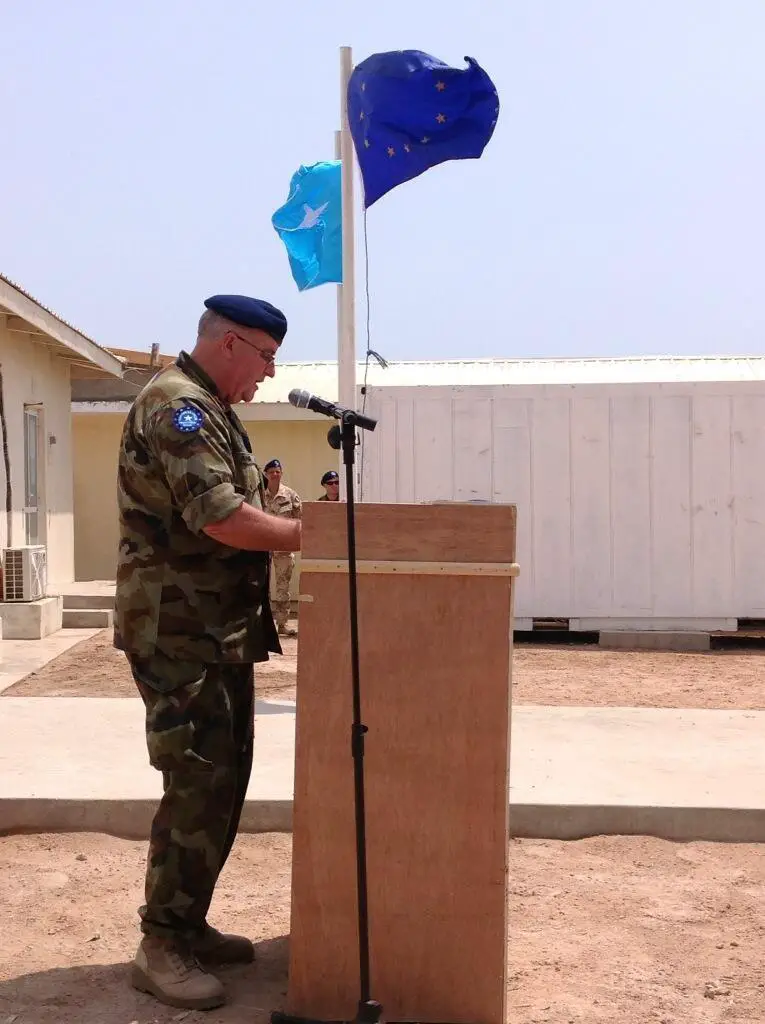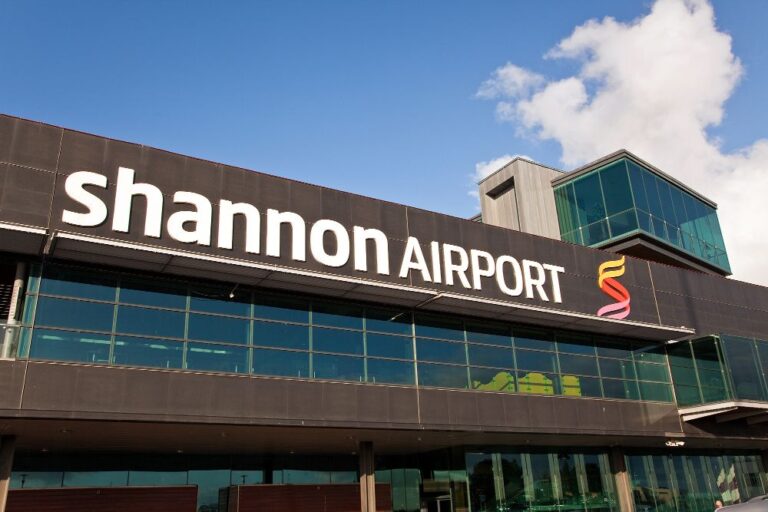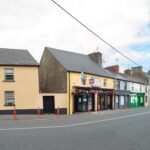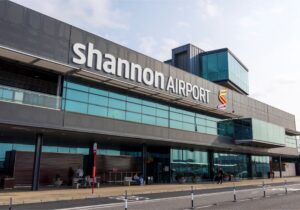*Shannon Airport.
SHANNON AIRPORT is the strongest location for the establishment of an Irish Air Policing Fighter Squadron, retired members of the Irish Defence Forces have argued.
In a new proposal, Brigadier General Ger Aherne (Retd) and Lieutenant Colonel Jim Lynott (Air Corps Pilot Retired) have put forward the case for Shannon Airport to be better utilised to station Irish intercept aircraft.
Ireland’s national security indifference has “alarmed” EU and international partners, they stated “directly threatens their national security, most especially Europe’s. Historically, Ireland believed its geography on the periphery of Europe was a defence against malign attack. Not anymore. Ireland’s positioning controls the western air and sea approaches to Europe, avenues of approach for potential malign air and sea belligerents. Many undersea cables connecting the world pass under Irish waters”. They flagged that Ireland is one of the richest economies in Europe.
An approximate 1.2m flights pass through Irish airspace on an annual basis equating at 80 percent of trans-Atlantic flights.
National air sovereignty is not protected despite the fact that “85% of all transatlantic flights enter and pay a navigation charge to transit Ireland’s airspace,” they claimed. Primary radar miliary specification detection, air intercept capability and communications capability for high level decision making are viewed as the basic requirements to protect national air sovereignty.
They added, “Ireland is the only country on Europe’s West Atlantic frontier not possessing primary military radar and QRA capabilities This is a worrying gap in Western European airspace monitoring and air security”. On Europe’s western flank, Norway, United Kingdom, France, Spain, Portugal and Iceland, possess sizeable air policing capabilities with primary military radar and Quick Reaction Alert (QRA) aircraft.
Presently, Ireland does not have a meaningful air policing capability but must develop one rapidly, Aherne and Lynott stated. “For Ireland to acquire that capability would entail an initial capital cost €350m to purchase the aircraft and an annual crewing and maintenance cost of €20m”.
Air policing typically consists of four key elements intercept aircraft, rapid response, situational awareness and command/control systems support. The current air policing capability in Ireland is “token” in their view. “Ireland has no effective primary radar with no capability to monitor its sovereign airspace. European countries of Ireland’s size, Finland, Norway, Denmark, Austria possess comprehensive ‘full’ air defence with large fleets of 4th/5th Generation fighter aircraft.

“Any Irish air policing aircraft should be stationed along our west coast to launch into the most likely approach paths of rogue or unidentified aircraft, namely from the west and northwest approaches. This makes Shannon Airport the best operationally appropriate location to station Irish intercept aircraft”.
Stationing sovereign air assets at Shannon would serve lift the confidence of EU and international allies, they maintained. “It would increase the use and prestige of Shannon Airport, be a multiplier of military employment to that region with its ripple effect economic benefits. Crewing/staffing air policing at Shannon would require 200 Air Corps personnel of mixed qualifications/skillsets. When families are added to that workforce, it could reach as many as 1,000 people, consistent with the states policy of supporting regional development and employment in an area long associated with aviation”.
Light Combat Aircraft would be deemed as appropriate aircraft for such a role in Ireland.
“These are advanced supersonic jet training aircraft converted to combat use and capable of high-altitude, high-speed intercept,” they explained.
“For an initial outlay of €350m, and an annual operational cost of €20m, it’s long overdue Ireland having this sovereign capability. Shannon Airport is strategically and operationally ideal for this task,” they added.
Speaking to The Clare Echo on Tuesday morning, Kiltoom native Aherne believed the outlay of €350m and annual fees of €20m was not too much to ask. “I believe there is support for it, the reason we’re doing this is to say it’s not outside the reach of Ireland economically, relatively speaking it’s peanuts”.
He pointed to “the true neutrals of Europe” name checking Austria, Switzerland “and up until recently” Finland who possess “massive armies” yet don’t under-fund their housing or health services. “The common belief in Ireland is that it is financially out of reach, it is not financially out of reach”.
Strength of the Defence Forces in Ireland hasn’t been as low since the 1960s, Aherne remarked while pointing out it has been subject to twelve overviews and reforms in the past twenty years, “it has suffered from policy and budget deficits from successive Governments”.
While the Defence Forces struggles with recruitment, he believed a ‘build it and they will come’ approach regarding the Shannon project would help in this sector and could take five to ten years to complete. “The Airport is there, it is staffed in traffic control, there’s loads of room in Shannon, it is geographically ideal for where you want a surge”.

















